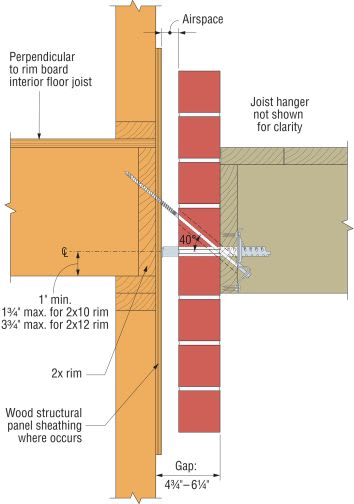Interesting new product from Simpson:
It has a lot of "caveats" in the notes, but it allows you to have a deck ledger on your brick veneer.
To be honest I really think bolting the ledger to the brick shouldn't be so frowned upon. The brick is masonry which we use for bearing all the time. The brick is tied back to the wall studs so it is braced laterally. You need to have some sort of lateral restraint for the deck that satisfies the intent of 2018 IRC Section R507.9.2 anyway. You might be woried about the eccentricity of the vertical load being applied to the brick, but won't the joist and decking restrain that rotation to some degree anyway?
I'd really like to see a deck that is bolted to the brick vs this connector. All other factors being the same.
EIT
It has a lot of "caveats" in the notes, but it allows you to have a deck ledger on your brick veneer.
To be honest I really think bolting the ledger to the brick shouldn't be so frowned upon. The brick is masonry which we use for bearing all the time. The brick is tied back to the wall studs so it is braced laterally. You need to have some sort of lateral restraint for the deck that satisfies the intent of 2018 IRC Section R507.9.2 anyway. You might be woried about the eccentricity of the vertical load being applied to the brick, but won't the joist and decking restrain that rotation to some degree anyway?
I'd really like to see a deck that is bolted to the brick vs this connector. All other factors being the same.
EIT

